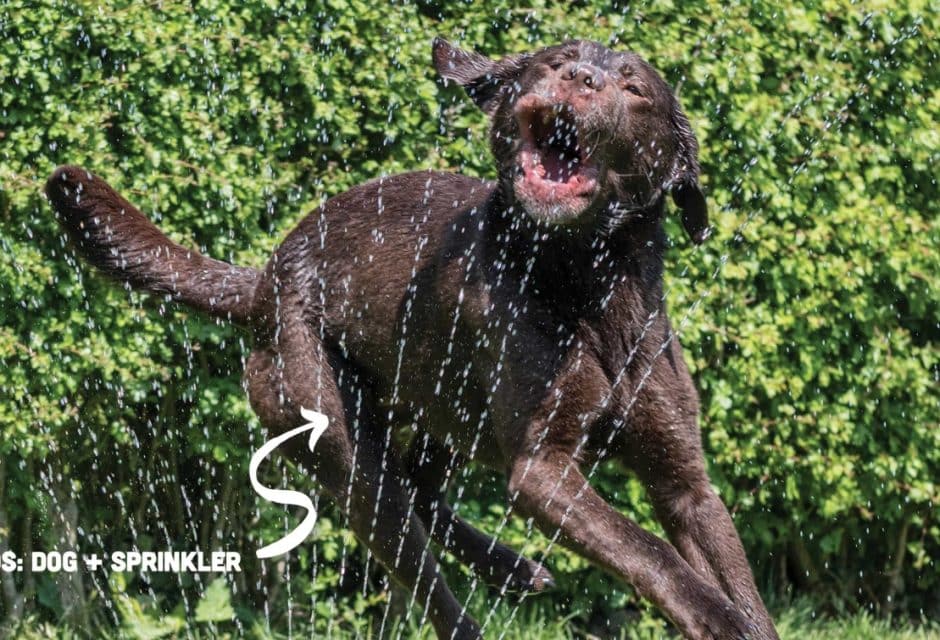

Probiotics
The Buzz on Bugs
The world is full of bacteria; many kinds are harmful and
can cause illness, but there are also beneficial bacteria. The
gastrointestinal (GI) tract uses bacteria to digest food and to
make certain vitamins. Most of these helpful bacteria live in the large
intestine (colon). Stress, illness, medication, or change in diet can
upset the balance of bacteria in the large intestine, which can lead to
minor problems such as gas, or more major problems such as diarrhea.
Having the right balance of bacteria helps your dog to make better use
of food and can help prevent some GI illnesses.
Probiotic is the general term applied to a group of live bacteria that
are normally found in the gastrointestinal tract of healthy dogs and are
thought to have a beneficial effect on GI health. The two main beneficial
bacteria for dogs are Lactobacillus acidophilus and Enterococcus
faecium (previously known as Streptococcus faecium). These beneficial
bacteria can out-compete some of the bad bacteria such as Escherichia coli (E. coli) and prevent them from colonizing
in the GI tract. In addition, L. Acidophilus and E.
Faecium produce lactic acid. Lactic acid, in turn,
stimulates the development of L. Acidophilus and
E. Faecium and increases acidity in the large intestine,
which is unfavourable for some pathogenic
bacteria and good for increased enzyme activity.
Probiotics are believed to be useful in improving
digestion and are reputed to help improve
immune function. Adding probiotics to your
dog’s diet may be most useful if your dog:
• has had antibiotic treatment
• has changed to a new food
• has a food allergy
• has inflammatory bowel disease
• is a senior or a puppy.
Probiotic bacteria are host specific. Just as dogs have a
variety of breeds within the species, L. Acidophilus and E.
Faecium have a variety of different strains. This means that
the L. Acidophilus strain that is beneficial to humans may not
be beneficial to dogs and vice
versa. One of the most common
sources of probiotics is
live culture yogurt, but not all
yogurt contains live bacterial
strains and these probiotics
are designed for humans and
may not be fully beneficial to
dogs. When looking to purchase
a probiotic you want to
make sure that you are purchasing a dog probiotic.
Probiotics live and function in the large intestine. For a
probiotic to be effective, it needs to survive the very acidic
environment of the stomach and small intestine so it can
reach and colonize the large intestine. One of the ways to
ensure enough probiotic reaches the large intestine is to
start with a very high concentration of live probiotic bacteria.
As the high quantity of bacteria passes through the GI
tract, some will die but the majority will survive. In order to
ensure that the probiotic is effective, the dog needs to consume
millions or billions of viable bacteria. The number of live bacteria is measured as the number
of colony-forming units (CFU) per gram
of probiotic. When looking to purchase
a probiotic, look for a product that has
millions or billions of CFU per gram. You
may see this reported in scientific notation.
For example, one million probiotic
bacteria may be reported as 1 x 106 CFU
and 1 billion may be reported as 1 x 109
CFU.
Canine probiotics are not drugs and, as
a result, they are not currently regulated
in Canada. Unfortunately, this means that
there is no assurance as to the accuracy
of the manufacturer’s label. A study
done in 2003 tested 19 commercial pet
foods claiming to contain probiotics and
found that none of the products tested
contained all the strains claimed on the
label. Some labels will claim the presence
of a bacterial fermentation product (i.e.,
Lactobacillus acidophilus fermentation
product). These fermentation products
are not probiotics because they do not
contain live bacterial cells. Instead, they
are a source of enzyme activity that may
not survive the acidic environment of
the stomach and may not, therefore, be
beneficial.
When choosing a product that claims
probiotic presence, consider the following
criteria:
• The list of ingredients should identify
the bacterial species, such as
Lactobacillus acidophilus and a good
product will also indicate the strain.
• The label should guarantee the number
of CFU in millions or billions per gram.
• It should be a product that is
designed specifically for dogs.
• The product should have a customer
service number so you can contact
the manufacturer if you have any
questions.
• The probiotic should have a bestbefore
date, as storage time and
conditions (i.e., excessive heat or
cold) can reduce the viability of some
bacterial stains.
For a variety of reasons, scientific
research has had some difficulty proving
the proposed benefits of feeding probiotics
to dogs, however, they are unlikely to
cause harm to your dog. There are some
conditions in which you should consult
your veterinarian before feeding probiotics.
If your dog is immune compromised
or undergoing GI surgery, or is suffering a
severe bout of gastroenteritis, you should
not feed probiotics until you have discussed
it with your veterinarian.
While there is an increasing awareness
in society about bacteria and viruses,
most of the media focus has been on
pathogenic bacteria. It is important to
remember that there are many beneficial
bacteria. Not all bugs are bad.
Join the newsletter and never miss out on dog content again!
"*" indicates required fields
By clicking the arrow, you agree to our web Terms of Use and Privacy & Cookie Policy. Easy unsubscribe links are provided in every email.





